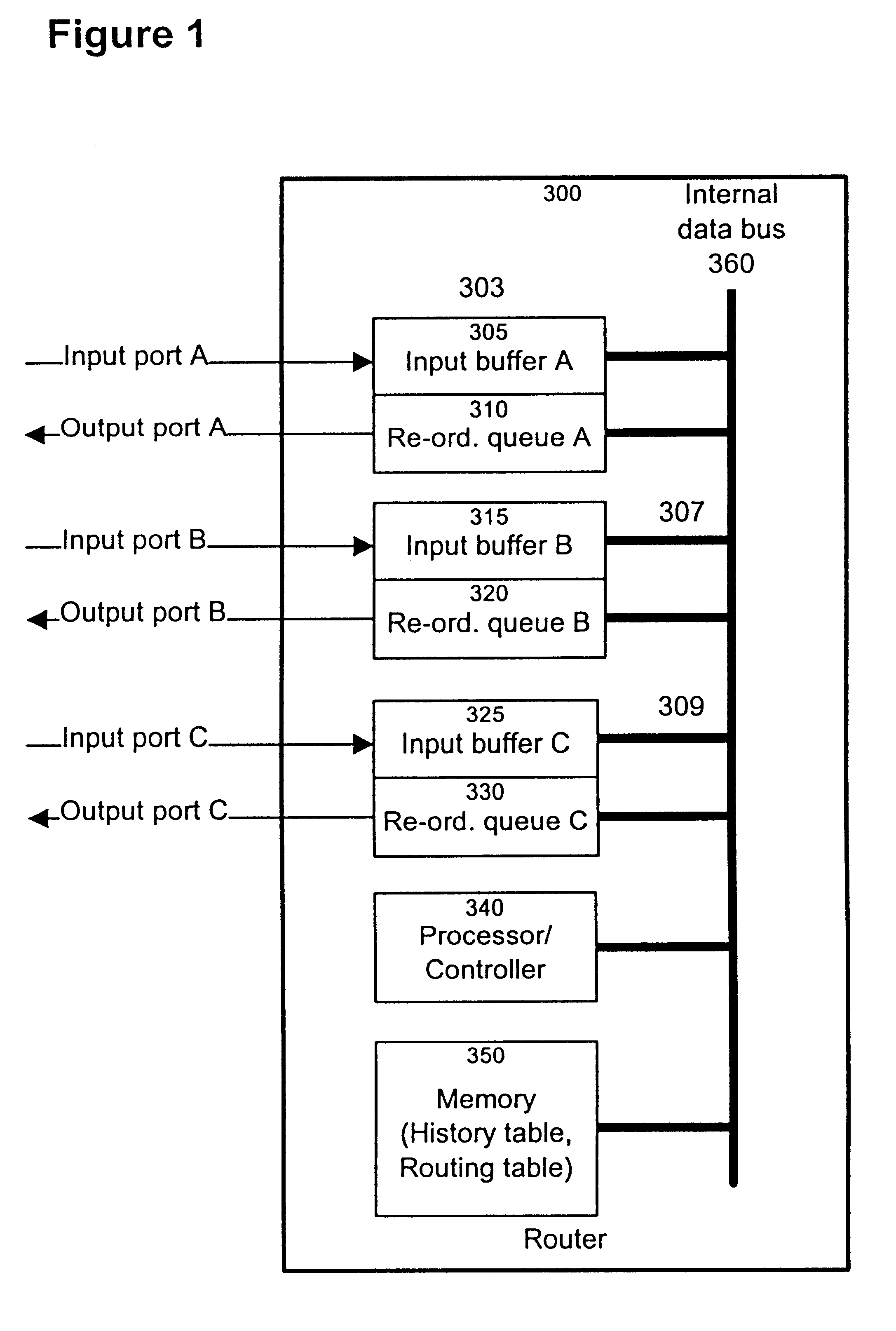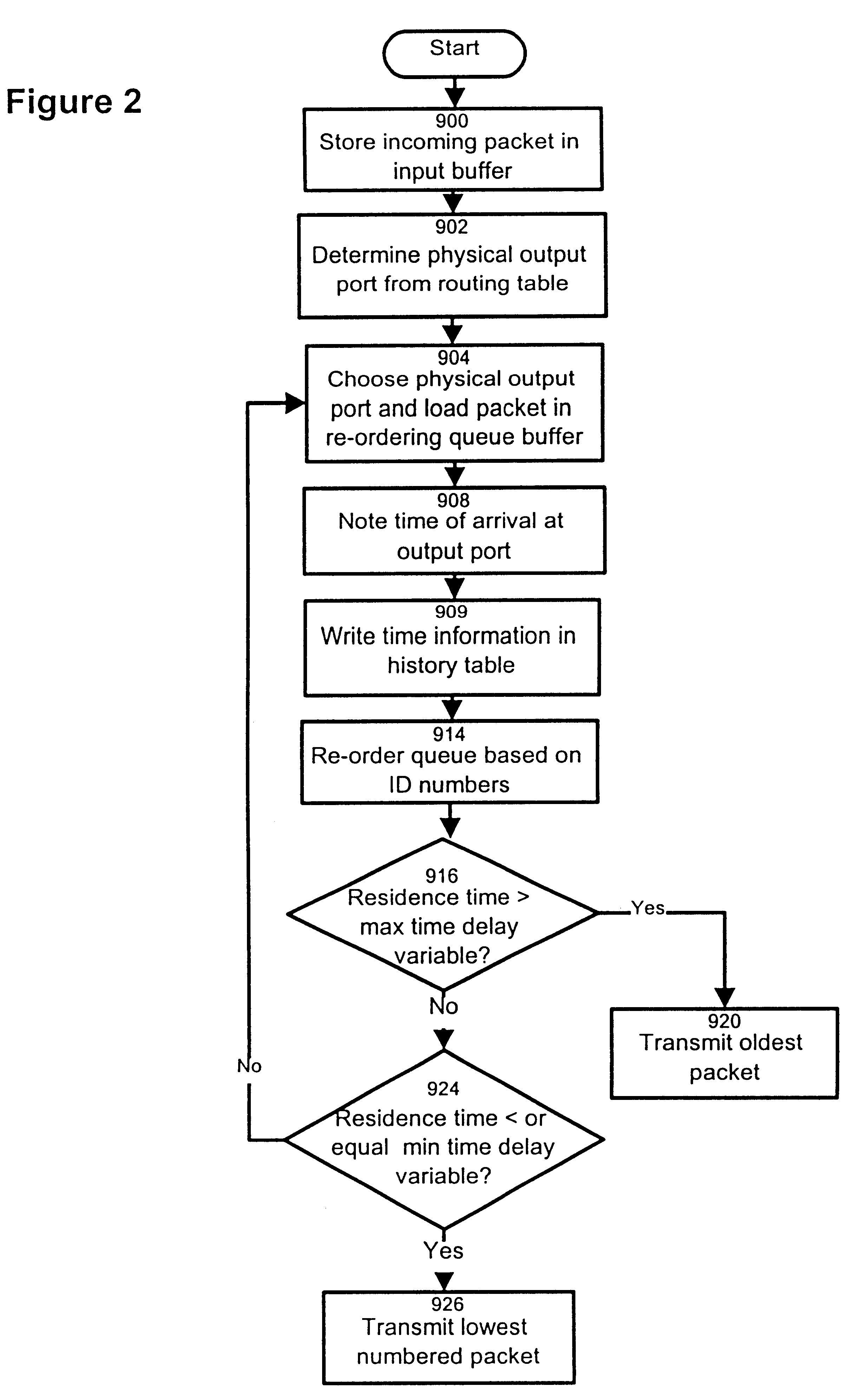Method and apparatus for re-ordering data packets in a network environment
a network environment and data packet technology, applied in data switching networks, digital transmission, securing communication, etc., can solve the problems of large drop in network throughput, inability to accept one link being underutilized, inefficient use of total available bandwidth,
- Summary
- Abstract
- Description
- Claims
- Application Information
AI Technical Summary
Benefits of technology
Problems solved by technology
Method used
Image
Examples
Embodiment Construction
The structure of a router constructed in accordance with the present invention is shown in FIG. 1. The router 300 is comprised of interfaces 303, 307 and 309 that connect an internal data bus to the respective physical links A, B and C. In the example shown, each physical link supports two ports, namely an input port and an output port. Note that each physical input and output port may include a number of virtual input and output ports. The interfaces 303, 307 and 309 include input buffers 305, 315 and 325, and re-orderable queue storage media in the form of buffers 310, 320 and 330. The input buffers are memory spaces of the FIFO type that can hold input IP data packets received at the input port of the associated physical link. The purpose of the buffers is to provide a temporary storage mechanism allowing to hold the incoming IP data packets before a decision is made by the routing logic as to how those packets are to be handled. The physical configuration of the input buffers do...
PUM
 Login to View More
Login to View More Abstract
Description
Claims
Application Information
 Login to View More
Login to View More - R&D
- Intellectual Property
- Life Sciences
- Materials
- Tech Scout
- Unparalleled Data Quality
- Higher Quality Content
- 60% Fewer Hallucinations
Browse by: Latest US Patents, China's latest patents, Technical Efficacy Thesaurus, Application Domain, Technology Topic, Popular Technical Reports.
© 2025 PatSnap. All rights reserved.Legal|Privacy policy|Modern Slavery Act Transparency Statement|Sitemap|About US| Contact US: help@patsnap.com



